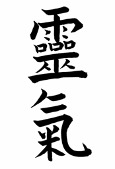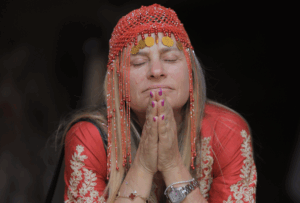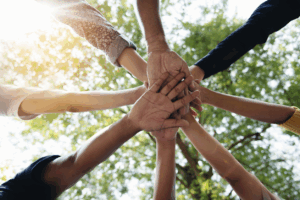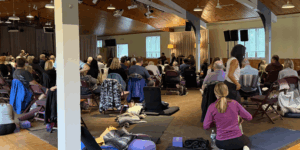“Reiki is love,
Love is wholeness,
Wholeness is balance,
Balance is well-being,
Well-being is freedom from disease”
― Dr. Mikao Usui
Reiki? It is a Japanese technique for stress reduction and relaxation that promotes healing. It is administered by “laying on hands” based on the concept of unseen life force energy that flows through us. Although Reiki was discovered by Mikao Usui In March 1922, laying on hands techniques such as this have been practiced for thousands of years. Reiki is a very simple, yet powerful technique that can be easily learned by everyone,
The word Reiki comes from Japanese Kanji. Kanji are ideograms used in the written language of Japan. The word Reiki is represented by two Kanji, Rei and Ki.

REI: Spiritual Wisdom. The general meaning of Rei is universal—it is present everywhere, but there is a deeper meaning. There are three sections:
- The upper section portrays clouds, and its meaning has to do with higher levels of consciousness, that are beyond ego, i.e. spiritual consciousness, the Universal mind, God, the Supreme Being. It is out of these realms that creativity, genius, miraculous experiences, and spiritual healing originate.
- The lower section of Rei represents the earth and portrays layers of solid and stone.
- The middle section of the figure, which is composed of three round squares represents the aspects of a human being—body, mind and spirit. This section represents the healer, who is located between heaven and earth and acts like a bridge to bring the wisdom, guidance, and healing of the spiritual realms to the people and living things of the earth.
KI: Life Energy. The word “Ki” means the same as Chi in Chinese Prana in Sanskrit and Ti or Ki in Hawaiian. Science calls it biofield energy. Ki is life energy. It is also known as the vital life force or the universal life energy. This is the non-physical energy that animates all living things. As long as something is alive, it has life energy circulating through it and surrounding it; when it dies, the life energy departs. If your life energy is low, or if there is a restriction in its flow, you will be more vulnerable to illness. When it is high and flowing freely, you are less likely to get sick. Life energy plays an important role in everything we do. It animates the body and has higher levels of expression. Ki is the primary energy of our emotions, thoughts, and spiritual life.
The idea of Ki originally came from a pot of boiling rice with a lid on it. As the rice boiled, the steam built up inside the pot and occasionally pushed the lid up and steam would spurt out. It was thought that the steam that spurted out contained the essence of life energy of the rice. With this observation, the concept of life energy was created.
The Kanji for Ki contains a cross with emanating lines. It is said that this part of the figure represents the rice in the pot. And in fact, this is the kanji for rice. The pot is represented by the line on the right that goes over the top of the rice. The lid represented by the two lines above the pot.
Spiritually Guided Life Energy
Reiki is a special kind of Ki. It is Ki that is guided by spiritual consciousness and is defined as spiritually guided life energy. This is a meaningful interpretation of the word Reiki. It more closely describes the experience most people have of it; Reiki guiding itself with its own wisdom rather than requiring the direction of the practitioner.
What Happens in a Traditional Reiki Session
Reiki treatments can occur anywhere, but most people prefer a calm, quiet room. During a treatment, you lie down or sit in a chair, fully clothed. A practitioner lightly places their hands on or just above your body in various locations on your head, torso, arms and legs to help you feel calm and relaxed.
The practitioner will then place their hands lightly on or over specific areas of the client’s body. They will typically keep their hands in these positions for around 3 minutes.
While the practitioner holds their hands lightly on or over the body, an energy transfer takes place. During this time, the practitioner may report that their hands feel warm or are tingling. They will hold each hand position until they sense that the energy has stopped flowing.
When the practitioner feels that the heat, or energy, in their hands has gone, they will remove their hands and place them over a different body area.
The whole treatment takes around 60 to 90 minutes.
Some Reiki practitioners will use crystals and chakra healing wands to enable healing or protect a home from negative energy.
If there is a particular injury, such as a burn, the practitioner will hold their hands just above the wound.
Health Benefits of Reiki
According to practitioners, Reiki channels universal energy known as ki, pronounced “chi.” This is the same energy involved in tai chi exercise.
Reiki allegedly:
- aids relaxation
- assists in the body’s natural healing processes
- develops emotional, mental, and spiritual well-being
- induces deep relaxation
- helps people cope with emotional stress
- improves overall well-being
Some people may include Reiki into their wellness plan for conditions such as:
- cancer
- heart disease
- anxiety
- depression
- chronic pain
- infertility
- neurodegenerative disorders
- autism
- Crohn’s disease
- fatigue
Many hospitals, including Memorial Sloan Kettering Cancer Center, have Reiki practitioners on their staffs.
It is important to note that Reiki should never take the place of medical treatments.
How to Become a Reiki Practitioner
Reiki is taught according to the Japanese tradition of the sensei (teacher), who passes the knowledge to the student through attunement, an initiation ceremony that is thought to help open the student’s energy channels to facilitate the flow of healing energy, and potentially help improve health, according to past research.
Being able to do Reiki therapy is passed on from a teacher of Reiki to a student during a Reiki class lesson. The process of transferring the ability to do reiki is called attunement.
Once you get an attunement, you can do Reiki whenever your hands are placed on yourself or another person with the goal of doing Reiki, and the energy is thought to start to flow on its own.
There are different degrees of attunement:
- First-degree attunement gives someone the ability to practice reiki on themselves and others with touch.
- Second degree gives someone the ability to practice it mentally from a distance without direct touch
- Third degree (also called master training)
[Reiki] is a spiritual practice, like meditation is a spiritual practice,” says Pamela Miles, a New York City–based Reiki master and researcher who has collaborated with the medical schools at Harvard and Yale universities to develop Reiki programs there. Reiki, despite its spiritual components and roots, may be and is often used therapeutically.
History of Reiki
Reiki as practiced in the United States today was developed by the Buddhist priest Mikao Usui (known as Usui-Sensei). He was born in Japan on August 15, 1865. Throughout his lifetime, he studied Buddhism, martial arts, and other ancient Japanese meditation and healing techniques. Mikao Usui also travelled to other countries like China, the U.S., and countries in Europe to pursue further studies and to acquire knowledge of medicine, psychology and other religions.
Mikao Usui worked towards finding his purpose in life and achieving the state of spiritual enlightenment. In 1922, he decided to go to the sacred mountain Kurama near Kyoto, where he underwent a strict spiritual practice involving meditation and fasting for 21 days. At the end of that period, he would either die or become enlightened. In the morning of the last day, Mikao Usui experienced a strong sensation, as if he was struck by lightning, and saw a white light fly over his head. Though Usui had been starving and near death from fasting, the burst of intense healing energy gave him a sense of vitality and awareness that he’d never felt before. It filled him with a highly enjoyable state of vitality and spiritual energy and enabled him to become enlightened. He also received the ability to access healing Reiki energy and teach others to use it.
After his spiritual awakening, Mikao Usui understood that to be a healer and to teach others was his life purpose. He opened a Reiki clinic in Tokyo, where he passed his knowledge of Usui Reiki Ryoho healing system to his students and gave treatments to other people.
After this, Hawayo Takata, a Japanese-Hawaiian Reiki master, began teaching Usui’s modality in Hawaii in the 1930s, and it traveled to the rest of the United States in the 1970s.
As early as the mid-1990s, physicians, nurses, and other medical staff who had learned Reiki began using the technique in hospitals around the United States, and Reiki continues to expand as more and more people experience benefits from it, per the International Center for Reiki Training. Today, Reiki is used in both hospital inpatient and outpatient settings as a complementary therapy for surgery, cancer, and AIDS, according to the IARP.
A New Reiki Energy
Holy Fire® Reiki is a new form of Reiki that was introduced in 2014 by the ICRT. It was introduced by William Lee Rand. This form of Reiki is both powerful and gentle and provides purification, healing, empowerment and guidance.
Holy Fire® energy is noticeably more refined and comes from a higher level of consciousness. The Tibetan symbols, including the Tibetan Master Symbol and the Tibetan Fire Serpent, as well as the violet breath, are retired and replaced with the Holy Fire® Reiki The attunement process was renamed to be called an Ignition which was for the Master level and then later a Placement process was given for Reiki I and II. These new methods of passing the energy are significantly different, requiring little interaction, yet producing amazing results. It works continuously even when not thinking about it and spontaneously heals issues as they come up. Some other benefits:
- Always respects free will.
- Heals deeply and quickly without distress.
- Heals relationships and interactions with others.
- Releases worry and replaces it with a sense of safety in a most pronounced way.
- Spontaneously provides guidance that is palatable for every level of life experience.
- Tends to develop all the personality traits that are healthy for a person to have such as love of self and others, kindness, patience, confidence, vitality, enthusiasm, optimism, trust, joy, peace and so forth.
- One of the more wonderful effects is a feeling of being loved. This is a deep and refined feeling that is very nurturing.
- Once received, it continues to develop itself to be more evolved and effective.
Holy Fire® is the registered service mark of William Lee Rand.



